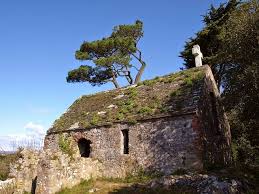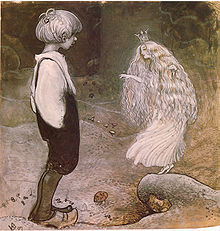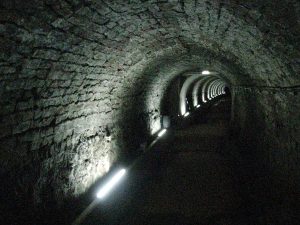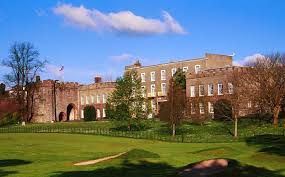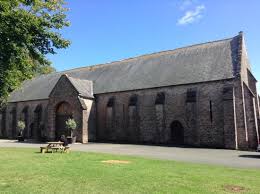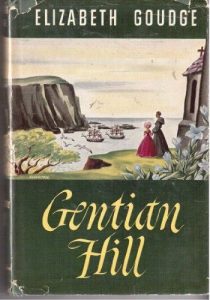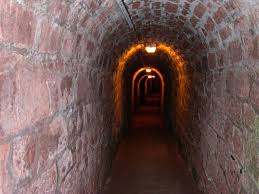Is there a secret tunnel connecting Torre Abbey and the enigmatic St Michael’s Chapel on Chapel Hill? That’s the Torquay legend that has been around for decades and possibly centuries. But is it true?
The obvious first question we need to ask concerns the real logistical problems of digging a tunnel over half a mile long, and then a vertical shaft through the centre of a limestone outcrop – for no discernable reason. But perhaps the existence of the tunnel isn’t as important as to why people thought that it may actually really be there.
A variety of folk beliefs have developed around underground spaces – and their fabled inhabitants. Across Devon caves have long been associated with the Devil, with Daddyhole’s sea caves being one example. These hypogeal spaces were also traditionally inhabited by those small humanoid creatures known as Pixies, which were taken seriously by local folk until the mid nineteenth century. For example, Kent’s Cavern supposedly had caves so extensive that they ended in Kent – hence the name. In a local rhyme we are told of a dog lost in the tunnels of the Cavern. When he emerges on the other side of the country he has lost all his fur to the grasping hands of subterranean pixies:
“And he went
And he went
Until he come out
In the county of Kent”.
It’s more likely that the name originates in the Celtic ‘canto’ meaning ‘border’ or ‘coastal’, however. Accordingly, in Devon we have Kenn and Kenton, while the County of Kent and Canterbury have the same source. There was also an early Victorian belief that the god Mithras was worshipped in Kent’s Cavern during the third century. What a Roman mystery religion was doing in Torbay is sadly similarly a mystery and doesn’t have any supporting evidence.
Perhaps there is an irresistible tendency to project mystery on the subterranean. And even if we know exactly what a tunnel is for, that doesn’t seem to prevent a mythology growing in the dark. In Exeter, for instance, medieval tunnels dating from the 14th century run under the High Street and were built to house the pipes that brought fresh water to the city. Nevertheless, these underground passages have intrigued local people and have generated stories of ghosts, buried treasure, secret escape routes, and passages for nuns and priests.
Secret tunnels are hidden routes used for stealthy travel, escape, or movement of people and goods. And some buildings certainly have secret passageways built into the original plans, such as secret passages in medieval castles, designed to enable the inhabitants to escape from an enemy siege. So they do exist – but tunnels and secret passages are also common in folklore traditions across Europe. They usually are said to lead from prominent medieval buildings as country houses, castles, churches, ancient monuments and, as in Torquay’s example, abbeys.
These legends about the existence of hidden tunnels often involve improbably long subterranean passages, sometimes running under major obstacles such as rivers and lakes to reach their destinations. In the Chapel Hill example, it’s just impractical to tunnel through limestone for no essential goal.
Notably, religious buildings and monks are particularly common elements in many tunnel stories, and feed myth, legend and exaggeration. Underground spaces are mysterious, attract stories and theories and have a fascination due to their being hidden from view with their contents, purpose, extent and destinations remaining unknown. Not surprisingly, we have Sigmund Freud and Carl Gustav Jung joining in the speculation with their psychological interpretations of the symbolic meanings of tunnels.
As we have noted, there are many examples of secret tunnels associated with abbeys across the country: Easby Abbey; Granchester Manor in Cambridge; Newbury’s St Nicolas Church; Necton in East Anglia; Kirkstall Abbey in Leeds; Newlaithes Hall in Newlay; St Edwards in the Staffordshire village of Leek; the Grange at Beckett Park; Leicester Abbey; and many more. Perhaps the most striking parallel to our own legend is the tunnel that is said to run between Glastonbury Abbey and the Tor. Similarly, Wincanton’s 13th century Stavordale Priory, built for Augustinian canons, was converted into a private residence after the suppression of the monastery in 1538. It was then reported that there was a secret tunnel from the bell tower that provided an escape route for priests.
So are the stories linked in some way? What they appear to have in common is the Reformation and the suppression of the Catholic Church. It was in 1539 that the white-robed canons of Torre Abbey surrendered to Henry VIII’s commissioner at the Dissolution of the Monasteries. Across England Catholic priests used hidden rooms called priest holes to escape Protestant persecution, starting from the reign of Elizabeth I. Catholicism was forced metaphorically underground and, in the case of priest-holes, by necessity hidden away from view.
And we do have the legend of Torre Abbey’s most famous ghost, the Spanish Lady. In 1588 the Armada vessel Nuestra Senora del Rosario was captured and 397 prisoners held in the Abbey’s tithe barn, which subsequently became known as the Spanish Barn. By the early 20th century the Spanish Lady legend had been transformed into Gothic melodrama, as in the book ‘Tales of Torquay’. In this version of the story, there was a Catholic priest who, “resided in the ruined Abbey” and who was “permitted to administer the last rites, but her troubled spirit found no rest… it is still to be seen drifting slowly and rather wearily through the Abbey park towards the Spanish Barn”. The presence of an active Catholic priest seems very unlikely in staunchly Protestant Elizabethan Torbay, though other legends do have priests living below ground, so there may be a connection.
Indeed, post-Reformation, a number of abbey sites were subsequently purchased by Catholic families – as was Torre Abbey by former recusants the Carys – so there may have been a legacy of local mistrust of Catholics generally and a suspicion that ‘Romish’ activities were carrying on ‘beneath’.
Along with folk songs and storytelling, popular fiction is always a stimulus for local legends. In the late 1890s, detective novels featuring seemingly ‘impossible crimes’ became popular. These crimes were often carried out using secret passages or doors, popularising the idea that old buildings held secret spaces. Subsequent generations of detective pulp fiction and mystery story authors further used the plot device of secret passages. And, in 1949 Elizabeth Goudge wrote the Torquay-set novel ‘Gentian Hill’ which makes use of the tunnel in her story.
The other possible cause of such a local interest in hidden tunnels is the link to smuggling. Smugglers did avoid the excise man by making use of drains, sewers or water supply conduits, and in a few cases constructed tunnels. Many villages on the southern coast of England consequently have a local legend of a smugglers’ tunnel – yet most entrances have been lost or bricked up. Sadly Shaldon’s ‘Smugglers Tunnel’ isn’t one (pictured below). A ruined limekiln at the entrance suggests the real reason that it was cut – to access limestone that had been shipped to Ness Cove. Alternatively, it could be private beach access for Lord Clifford whose marine villa is now occupied by the Ness House Hotel.
So it doesn’t appear that there is a tunnel beneath Chapel Hill. On the other hand, there nearly was – the original plan for the Newton Abbot to Torquay railway, which cuts through the valley, called for a tunnel right through Chapel Hill.



